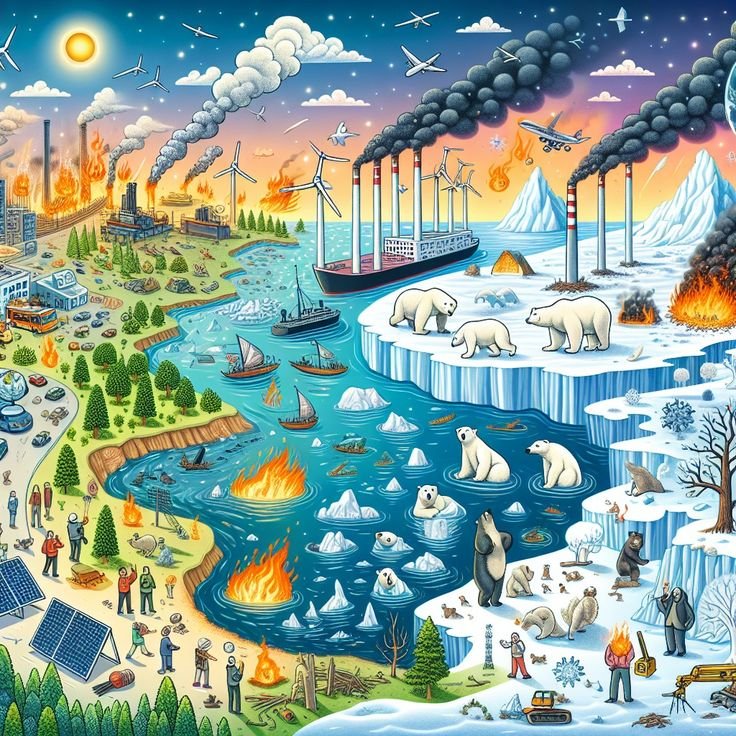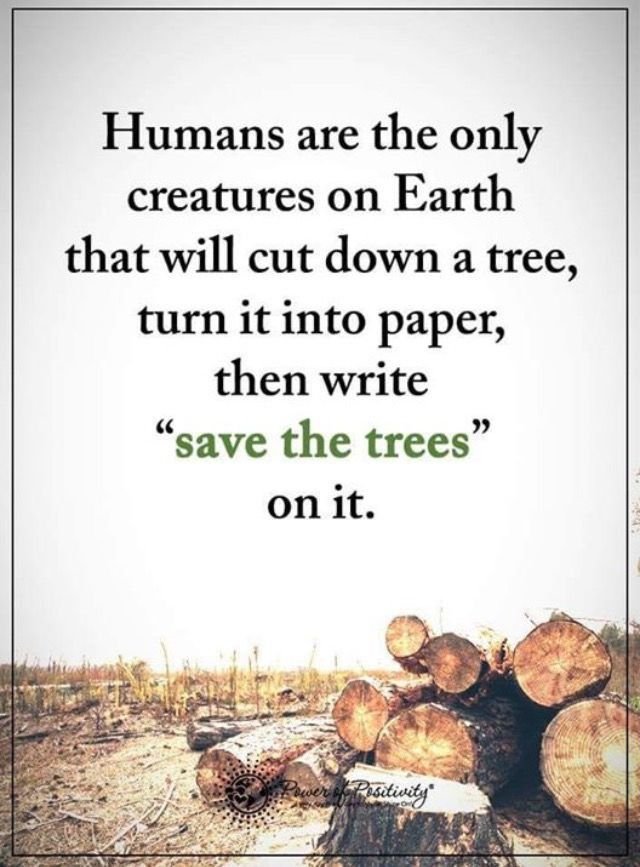
Introduction
Brief Overview of the Current State of the Planet
As we navigate through the 21st century, the state of our planet is increasingly alarming. Climate change, deforestation, pollution, and biodiversity loss are just a few of the pressing issues that threaten the delicate balance of our ecosystems. According to the Intergovernmental Panel on Climate Change (IPCC), global temperatures have already risen by approximately 1.1 degrees Celsius since the late 19th century, leading to more frequent and severe weather events. The consequences of these changes are not just environmental; they also impact human health, food security, and economic stability. The urgency to address these challenges has never been more critical.

Importance of Healing the Planet
Healing the planet is not merely an environmental concern; it is a necessity for the survival of future generations. The health of our planet directly correlates with our own well-being. For instance, air and water pollution can lead to serious health issues, while the loss of biodiversity can disrupt food chains and ecosystems. By adopting sustainable living practices, we can mitigate these effects and foster a healthier environment. Initiatives aimed at environmental healing, such as reforestation and pollution reduction, are essential for restoring the planet’s natural balance. Moreover, global sustainability initiatives, like the United Nations’ Sustainable Development Goals, emphasize the importance of collective action in addressing these challenges.
Introduction of the Primary Keyword: ‘Heal the Planet’
To effectively tackle the myriad of environmental issues we face, we must focus on how to heal the planet. This involves not only individual actions but also community efforts and global cooperation. Sustainable living practices, such as reducing waste, conserving energy, and supporting eco-friendly practices, play a crucial role in this endeavor. For example, adopting a plant-based diet can significantly reduce one’s carbon footprint, while participating in local clean-up events can foster community engagement and awareness. Furthermore, climate change solutions, such as renewable energy adoption and sustainable agriculture, are vital for long-term environmental health.
In this blog post, we will explore various strategies and initiatives that individuals and communities can implement to heal the planet. By understanding the importance of environmental healing and the impact of our choices, we can all contribute to a more sustainable future. Together, we can make a difference and ensure that our planet thrives for generations to come.
Understanding Sustainable Living
Definition of Sustainable Living
Sustainable living refers to a lifestyle that seeks to minimize an individual’s or society’s use of the Earth’s natural resources. It emphasizes the importance of making choices that do not deplete or harm the environment, thereby ensuring that future generations can enjoy a healthy planet. By adopting sustainable practices, individuals can contribute to environmental healing and play a vital role in addressing pressing issues such as climate change.
Importance of Adopting Sustainable Practices
The urgency of adopting sustainable practices cannot be overstated. With climate change posing significant threats to ecosystems and human health, it is crucial for individuals and communities to take action. According to the Intergovernmental Panel on Climate Change (IPCC), we have a limited window to reduce greenhouse gas emissions and mitigate the worst effects of climate change. By embracing sustainable living, we can collectively heal the planet, protect biodiversity, and promote global sustainability initiatives that foster a healthier environment.

Key Aspects of Sustainable Living
Several key aspects define sustainable living, each contributing to a more eco-friendly lifestyle.
Reducing Waste: One of the most impactful ways to live sustainably is by minimizing waste. This can be achieved through practices such as composting organic materials, recycling, and opting for products with minimal packaging. For instance, using reusable bags, bottles, and containers can significantly reduce plastic waste, which is a major pollutant in our oceans.
Conserving Energy: Energy conservation is another critical component of sustainable living. Simple actions like switching to energy-efficient appliances, using LED light bulbs, and unplugging devices when not in use can lead to substantial energy savings. According to the U.S. Department of Energy, energy-efficient homes can reduce energy consumption by up to 30%, which not only lowers utility bills but also decreases carbon emissions.
Sustainable Transportation: Choosing eco-friendly transportation options, such as biking, walking, or using public transit, can significantly reduce one’s carbon footprint. Carpooling or driving fuel-efficient vehicles also contributes to lower greenhouse gas emissions, making it an essential aspect of sustainable living.
Examples of Sustainable Living in Daily Life
Incorporating sustainable practices into daily life can be both simple and rewarding. For example, growing your own vegetables and herbs can reduce reliance on store-bought produce, which often involves significant transportation emissions. Additionally, participating in local community clean-up events or tree-planting initiatives can foster a sense of community while contributing to environmental healing.
Another practical example is adopting a plant-based diet, which has been shown to have a lower environmental impact compared to meat-based diets. According to a study published in the journal Nature, shifting towards plant-based diets could reduce food-related greenhouse gas emissions by up to 70%.
By understanding and implementing these aspects of sustainable living, individuals can make meaningful contributions to heal the planet and combat climate change.
Environmental Healing
Understanding Environmental Healing and Its Significance
Environmental healing refers to the process of restoring and rejuvenating ecosystems that have been damaged by human activities. This concept is crucial as it emphasizes the interconnectedness of all living organisms and their habitats. By focusing on environmental healing, we can mitigate the adverse effects of climate change and promote biodiversity. The significance of this practice lies in its potential to not only restore natural habitats but also to enhance the quality of life for all species, including humans. As we strive to heal the planet, we must adopt sustainable living practices that prioritize the health of our environment.

The Impact of Pollution and Deforestation
Pollution and deforestation are two of the most pressing issues facing our planet today. According to the World Health Organization, air pollution alone is responsible for approximately 7 million premature deaths each year. Water pollution, stemming from industrial waste and plastic debris, further exacerbates the crisis, threatening marine life and human health alike. Deforestation, driven by agricultural expansion and urban development, results in the loss of biodiversity and contributes to climate change by releasing stored carbon dioxide into the atmosphere. The destruction of forests not only disrupts ecosystems but also diminishes our planet’s ability to absorb greenhouse gases, making it imperative that we take action to heal these damaged environments.
Strategies for Environmental Healing
To effectively heal the planet, we must implement a variety of strategies that focus on restoration and sustainability. Reforestation is one of the most impactful methods, involving the planting of trees in deforested areas to restore habitats and sequester carbon. Organizations like the Arbor Day Foundation have successfully planted millions of trees, contributing to global sustainability initiatives.
Pollution cleanup is another critical strategy. Community-led efforts, such as beach cleanups and river restoration projects, have proven effective in removing debris and restoring natural habitats. Eco-friendly practices, such as reducing plastic use and promoting recycling, can also significantly decrease pollution levels. By adopting these strategies, individuals and communities can play a vital role in environmental healing.
Case Studies of Successful Environmental Healing Projects
Several successful environmental healing projects serve as inspiring examples of what can be achieved through collective effort. One notable case is the reforestation initiative in the Loess Plateau of China, which transformed a barren landscape into a thriving ecosystem. Through sustainable land management practices, the region saw a significant increase in vegetation cover, improving soil quality and local livelihoods.
Another example is the cleanup of the Great Pacific Garbage Patch, where organizations like The Ocean Cleanup are working to remove plastic waste from the ocean. Their innovative technology has the potential to significantly reduce ocean pollution, showcasing how targeted efforts can lead to substantial environmental healing.
These case studies highlight the importance of collaboration and innovation in addressing environmental challenges, demonstrating that healing the planet is not only possible but essential for our future.
Climate Change Solutions
Climate change is one of the most pressing challenges of our time, with far-reaching effects on ecosystems, weather patterns, and human health. Rising global temperatures, extreme weather events, and shifting agricultural zones are just a few of the consequences that threaten our planet’s stability. To heal the planet, it is essential to adopt effective climate change solutions that not only mitigate these impacts but also promote sustainable living practices.
Innovative Solutions to Combat Climate Change
One of the most promising avenues for addressing climate change is the transition to renewable energy sources. Solar, wind, and hydroelectric power are becoming increasingly viable alternatives to fossil fuels, significantly reducing greenhouse gas emissions. For instance, according to the International Renewable Energy Agency (IRENA), the global share of renewable energy in electricity generation reached 29% in 2020, a figure that continues to grow. Additionally, carbon capture technology is emerging as a critical tool in the fight against climate change. By capturing carbon dioxide emissions from industrial processes and storing them underground, we can significantly reduce the amount of CO2 released into the atmosphere.

Role of Technology in Climate Change Solutions
Technology plays a pivotal role in developing and implementing climate change solutions. Innovations such as smart grids, energy-efficient appliances, and electric vehicles are transforming how we consume energy and reduce our carbon footprint. For example, smart thermostats can optimize energy use in homes, leading to lower energy bills and reduced emissions. Furthermore, advancements in battery storage technology are making renewable energy sources more reliable, allowing for a more consistent energy supply even when the sun isn’t shining or the wind isn’t blowing. These eco-friendly practices not only contribute to environmental healing but also encourage individuals and communities to adopt more sustainable lifestyles.
Importance of Policy Changes and Global Cooperation
While innovative technologies and practices are essential, they must be supported by robust policy changes and global cooperation. Governments play a crucial role in creating frameworks that promote sustainable living and environmental healing. Policies that incentivize renewable energy adoption, regulate emissions, and support research into new technologies are vital for driving progress. Moreover, international agreements, such as the Paris Agreement, highlight the importance of global sustainability initiatives. These agreements foster collaboration among nations, encouraging them to set ambitious climate goals and share best practices for reducing emissions.
In conclusion, addressing climate change requires a multifaceted approach that combines innovative solutions, technological advancements, and strong policy frameworks. By embracing these strategies, we can work together to heal the planet and create a more sustainable future for generations to come.
Eco-Friendly Practices
Definition and Importance of Eco-Friendly Practices
Eco-friendly practices refer to actions and strategies that minimize harm to the environment and promote sustainability. These practices are essential in our collective effort to heal the planet, as they help reduce pollution, conserve natural resources, and combat climate change. By adopting eco-friendly habits, individuals and businesses can contribute to environmental healing and support global sustainability initiatives aimed at creating a healthier planet for future generations.
Practical Tips for Individuals and Businesses to Adopt Eco-Friendly Practices
Transitioning to eco-friendly practices can be straightforward and impactful. Here are some practical tips for both individuals and businesses:
Reduce, Reuse, Recycle: Start by minimizing waste. Individuals can reduce their consumption of single-use plastics by opting for reusable bags, bottles, and containers. Businesses can implement recycling programs and encourage employees to bring reusable items.
Energy Efficiency: Switch to energy-efficient appliances and LED lighting to lower energy consumption. For businesses, conducting an energy audit can identify areas for improvement, leading to significant cost savings and reduced carbon footprints.
Sustainable Transportation: Encourage walking, biking, or using public transport. For businesses, consider implementing a carpool program or providing incentives for employees who use eco-friendly transportation options.
Support Local and Sustainable Products: Choose locally sourced and organic products to reduce the carbon footprint associated with transportation. Businesses can partner with local suppliers to promote sustainable living and support the local economy.

Water Conservation: Simple actions like fixing leaks, using water-efficient fixtures, and collecting rainwater can significantly reduce water waste. Businesses can implement water-saving technologies in their operations.
Benefits of Eco-Friendly Practices for the Planet and Communities
The benefits of adopting eco-friendly practices extend beyond individual actions; they create a ripple effect that positively impacts communities and the planet. By reducing waste and conserving resources, we can mitigate the effects of climate change, which is crucial for environmental healing. Communities that embrace sustainable living often experience improved air and water quality, leading to better health outcomes for residents.
Moreover, eco-friendly practices can foster a sense of community and collaboration. When individuals and businesses come together to support sustainability initiatives, they create a shared commitment to protecting the environment. This collective effort can lead to innovative climate change solutions that address local and global challenges.
Highlighting Successful Eco-Friendly Initiatives
Numerous successful eco-friendly initiatives serve as inspiring examples of how communities can come together to heal the planet. For instance, the city of San Francisco has implemented a zero-waste program that aims to divert 100% of waste from landfills by 2030. This initiative has not only reduced waste but also created jobs and fostered community engagement.
Another notable example is the “Green Roofs” initiative in Chicago, which promotes the installation of green roofs on buildings to improve air quality and reduce urban heat. These initiatives demonstrate that when communities prioritize eco-friendly practices, they can achieve significant environmental and social benefits.
By embracing eco-friendly practices, we can all play a role in healing the planet and ensuring a sustainable future for generations to come.
Global Sustainability Initiatives
Overview of Global Sustainability Initiatives
In recent years, the urgency to heal the planet has led to the establishment of various global sustainability initiatives, with the United Nations Sustainable Development Goals (SDGs) being one of the most prominent frameworks. Adopted in 2015, the 17 SDGs aim to address pressing global challenges such as poverty, inequality, climate change, environmental degradation, and peace and justice. These goals serve as a blueprint for countries, organizations, and individuals to work collaboratively towards a sustainable future. By focusing on sustainable living and environmental healing, these initiatives encourage a holistic approach to tackling climate change solutions.
Importance of International Collaboration for Sustainability
International collaboration is crucial for the success of global sustainability initiatives. Climate change knows no borders; its effects are felt worldwide, making it imperative for nations to unite in their efforts. Collaborative initiatives, such as the Paris Agreement, exemplify how countries can come together to set ambitious targets for reducing greenhouse gas emissions. By sharing knowledge, resources, and technology, nations can develop eco-friendly practices that benefit not only their own populations but also the global community. This collective action fosters a sense of shared responsibility, emphasizing that healing the planet is a task that requires everyone’s participation.

Examples of Successful Global Sustainability Initiatives
Several successful global sustainability initiatives have made significant strides in promoting environmental healing. One notable example is the “Billion Tree Campaign,” launched by the United Nations Environment Programme (UNEP). This initiative encourages individuals, communities, and organizations to plant trees, contributing to reforestation efforts and combating climate change. As of 2021, over 15 billion trees have been planted worldwide, showcasing the power of collective action.
Another example is the “Global Goals for Sustainable Development,” which mobilizes businesses, governments, and civil society to work towards achieving the SDGs. Companies like Unilever and IKEA have committed to sustainable sourcing and reducing their carbon footprints, demonstrating that corporate responsibility can align with global sustainability initiatives.
How Individuals Can Support These Initiatives
Individuals play a vital role in supporting global sustainability initiatives. Simple actions can contribute significantly to healing the planet. For instance, adopting eco-friendly practices such as reducing waste, recycling, and using energy-efficient appliances can help lower one’s carbon footprint. Additionally, participating in local tree-planting events or supporting organizations that focus on environmental healing can amplify individual efforts.
Moreover, staying informed about climate change solutions and advocating for policies that promote sustainability can influence broader change. Engaging in community discussions, volunteering for environmental organizations, or even making conscious consumer choices can inspire others to join the movement. By integrating sustainable living into daily routines, individuals can collectively contribute to the success of global sustainability initiatives, ensuring a healthier planet for future generations.
Conclusion
Recap of the Importance of Healing the Planet
As we navigate the complexities of modern life, the urgency to heal the planet has never been more pronounced. The consequences of climate change, pollution, and biodiversity loss are evident in our daily lives, affecting everything from our health to our economy. Healing the planet is not merely an environmental concern; it is a holistic approach that encompasses social, economic, and ecological well-being. By prioritizing sustainable living and environmental healing, we can create a healthier planet for future generations. For instance, adopting eco-friendly practices such as reducing waste, conserving water, and supporting renewable energy can significantly mitigate the adverse effects of climate change.
Encouragement to Adopt Sustainable Practices and Support Global Initiatives
Every individual has the power to contribute to the healing of our planet. Simple actions, such as choosing to buy locally sourced products or reducing single-use plastics, can collectively lead to significant change. Moreover, supporting global sustainability initiatives, such as the United Nations’ Sustainable Development Goals, can amplify our efforts. These initiatives aim to address pressing global challenges, including climate change solutions and poverty alleviation, by fostering collaboration among nations, communities, and individuals. By participating in local clean-up drives or advocating for policy changes, we can play an active role in promoting environmental healing.
Final Thoughts on the Collective Responsibility to Heal the Planet
Ultimately, the responsibility to heal the planet lies with all of us. It is a collective endeavor that requires commitment, awareness, and action. As we face the realities of climate change, it is crucial to recognize that our choices matter. By embracing sustainable practices and supporting initiatives aimed at global sustainability, we can create a ripple effect that inspires others to join the cause. The journey toward healing the planet may seem daunting, but every small step counts. Whether it’s planting a tree, reducing energy consumption, or advocating for eco-friendly policies, we all have a role to play. Together, we can foster a culture of sustainability that not only heals our planet but also enriches our lives and the lives of generations to come. Let us unite in this mission, for the health of our planet is intrinsically linked to our own well-being.

Our Planet is begging from us; its once lush woodlands are vanishing, its seas are drowning in plastic, and its atmosphere is tainted with the murk of pollution. The splendor we once took for granted is swiftly disappearing, and if we don’t act now, we might lose it forever. The moment to take action is now. We cannot afford to remain passive while the cherished Earth is on the verge of irreversible harm. The Earth is not merely our residence—it shelters every living being, and its decline will influence future generations. We must unite to protect it before it’s too late. Let’s rise and advocate for the planet, its future, and all the lives it nurtures.
At Eco Beginner, we are committed to making this battle a bit easier and significantly more effective. We provide a diverse selection of eco-conscious, print-on-demand products, ranging from cozy cushions and trendy t-shirts to delightful mugs, wall art, lockets, puzzles, and much more. Every product we offer is crafted to facilitate a more sustainable lifestyle while still infusing joy and beauty into your everyday routine. When you choose to buy from us, you are making a deliberate decision to support a greener tomorrow.
Not only will you be acquiring distinctive, high-quality items, but you will also support a brand that genuinely cares about the environment. All of our products are designed with sustainability in focus, ensuring that every purchase you make aids in preserving the planet for future generations.
Every step you take with us brings you closer to a brighter, more sustainable future. In addition to our eco-friendly offerings, we are thrilled to introduce our new book on sustainable living. This book is an all-encompassing guide, brimming with practical insights, heartfelt counsel, and motivating tales to help you adopt a more eco-friendly lifestyle. By supporting us, you’re not just acquiring a product—you’re also endorsing a movement aimed at change.
Moreover, 50% of our profits are donated to charitable organizations, aiding those in distress and promoting environmental initiatives that can help heal the planet. Everything we produce is eco-friendly, and each purchase you make contributes to a lasting change in the world around us.
When you opt for Eco Beginner, you’re selecting more than just a product. You’re becoming part of a community that’s dedicated to rescuing the Earth, one mindful decision at a time. Together, we can create an impact—let’s unite and embody the change we urgently need. Thank you for joining us on this journey.
And even if you can’t buy anything today, you can still assist us in spreading the word! Just click on the ads on our site to support our cause. Every small action adds up, and your participation helps us reach a wider audience and create an even greater impact. Thank you for your on going support!



